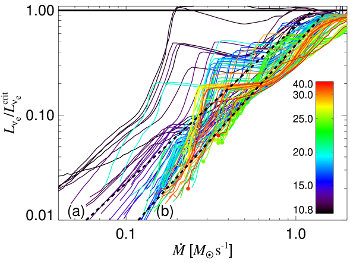 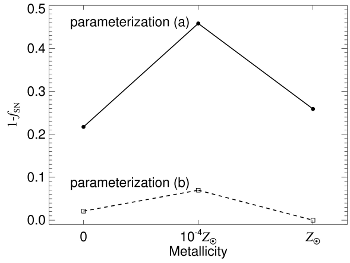 |
The Landscape of the Neutrino Mechanism of Core-Collapse Supernovae:
Neutron Star and Black Hole Mass Functions, Explosion Energies and Nickel Yields
O. Pejcha1 and T. A. Thompson2
1 Hubble and Lyman Spitzer Jr. Fellow, Department of Astrophysical Sciences, Princeton, NJ, USA
2Department of Astronomy, The Ohio State University, Columbus, OH, USA
Email: pejcha_[at]_astro_[dot]_princeton_[dot]_edu
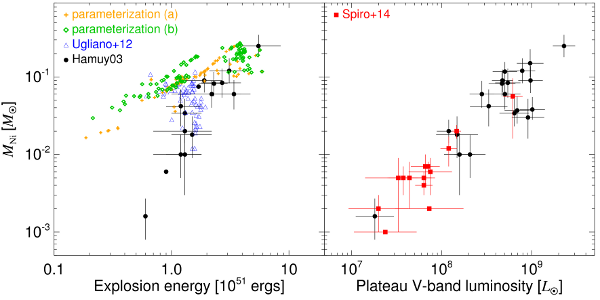
|
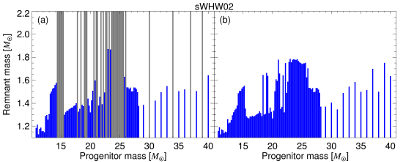 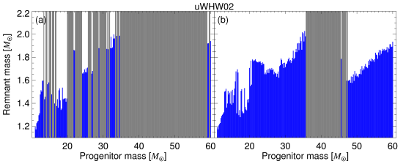 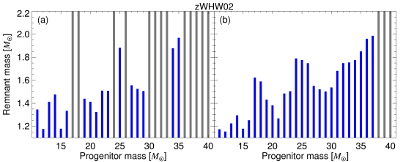 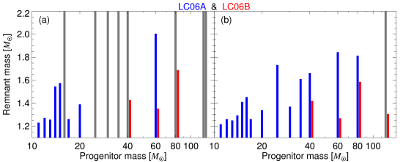 |
If the neutrino luminosity from the protoneutron star formed during a massive star core collapse exceeds a critical threshold, a supernova (SN) results. The normalization of this critical threshold and its dependencies on the parameters of the system remain uncertain. Using spherical quasi-static evolutionary sequences for many hundreds of massive star progenitors over a wide range of metallicities, we study how the explosion threshold maps onto observables - (1) fraction of successful explosions, (2) remnant neutron star (NS) and black hole (BH) mass functions, (3) explosion energies (ESN), (4) nickel yields (MNi) - and their mutual correlations. Successful explosions are intertwined with failures in a complex but well-defined pattern that is well described by the "compactness" parameter, but not by the progenitor initial mass. Within the context of current massive single-star progenitors, we show that the neutrino mechanism predicts that at solar metallicity, progenitors with initial masses 15 ± 1, 19 ± 1, and ~21-26 M☉ are most likely to form BHs, that the BH formation probability is significantly higher for low metallicity (10-4Z☉) progenitors, and that low luminosity, low Ni-yield SNe come from progenitors close to success/failure interfaces. Precise mass and metallicity measurements for progenitors and Ni measurements from lightcurves thus strongly constrain the neutrino mechanism. We qualitatively reproduce the correlation between ESN and MNi, we predict a correlation between both the mean and width of the NS mass distribution and ESN distribution, and we show that means of the NS and BH mass distributions are correlated. We show that the observed mean NS mass of ≈ 1.33 M☉ immediately implies that the fraction of successful explosions is higher than 0.35. As a proof of principle, we use the observed properties of NSs, BHs, and SN explosions to study the likelihood of many parameterizations of the neutrino mechanism. We find a distinct region of high probability favoring existence of failed supernovae. The lack of progenitor models with initial masses of 8-11 M☉ limits our ability to conduct a more complete analysis. We argue that the rugged landscape of progenitor structures mandates performing internally consistent simulations for large sets of progenitors and that SN theory should focus on reproducing the wide range of observed ESN and Ni yields rather than attempting to achieve a singular "canonical" set of supernova properties.
 |
| This plot summarizes results of our parameterization (a) as a function of metallicity and initial progenitor mass. Green shows successful explosions likely producing neutron stars. Orange shows successful explosions with explosion energy smaller than the binding energy of the overlying material and thus likely significant fallback. The remnant in these cases are probably black holes. Black shows failed explosions with progenitor collapsing to a black hole. Compare our results to Heger et al. (2003).
|
Neutron star and black hole mass function, explosion energies and nickel yields
We provide results from our model for Woosley, Heger & Weaver (2002) progenitor sets calculated with the HShen EOS: sWHW02, uWHW02, zWHW02.
Each file constains the following columns:
- Initial progenitor mass [M☉]
- Remnant mass in parameterization (a) [M☉]
- Explosion energy in parameterization (a) [1051 ergs]
- Mass inside rNi in parameterization (a) [M☉]
- Mass inside rNi in parameterization (a) assuming fixed explosion energy 1051 ergs [M☉]
- Initial progenitor mass [M☉]
- Remnant mass in parameterization (b) [M☉]
- Explosion energy in parameterization (b) [1051 ergs]
- Mass inside rNi in parameterization (b) [M☉]
- Mass inside rNi in parameterization (b) assuming fixed explosion energy 1051 ergs [M☉]
Notes: Remnant mass is either the baryonic mass inside the shock at the moment of explosion for successful explosions or the helium core mass of the progenitor star. Explosion energy is the time-integrated energy of the neutrino-driven wind. We multiplied the mass inside rNi by 0.5 to obtain the mass of the synthesized nickel. We use the same parameterization of the neutrino mechanism and equation of state for all progenitors so that the results are comparable.







